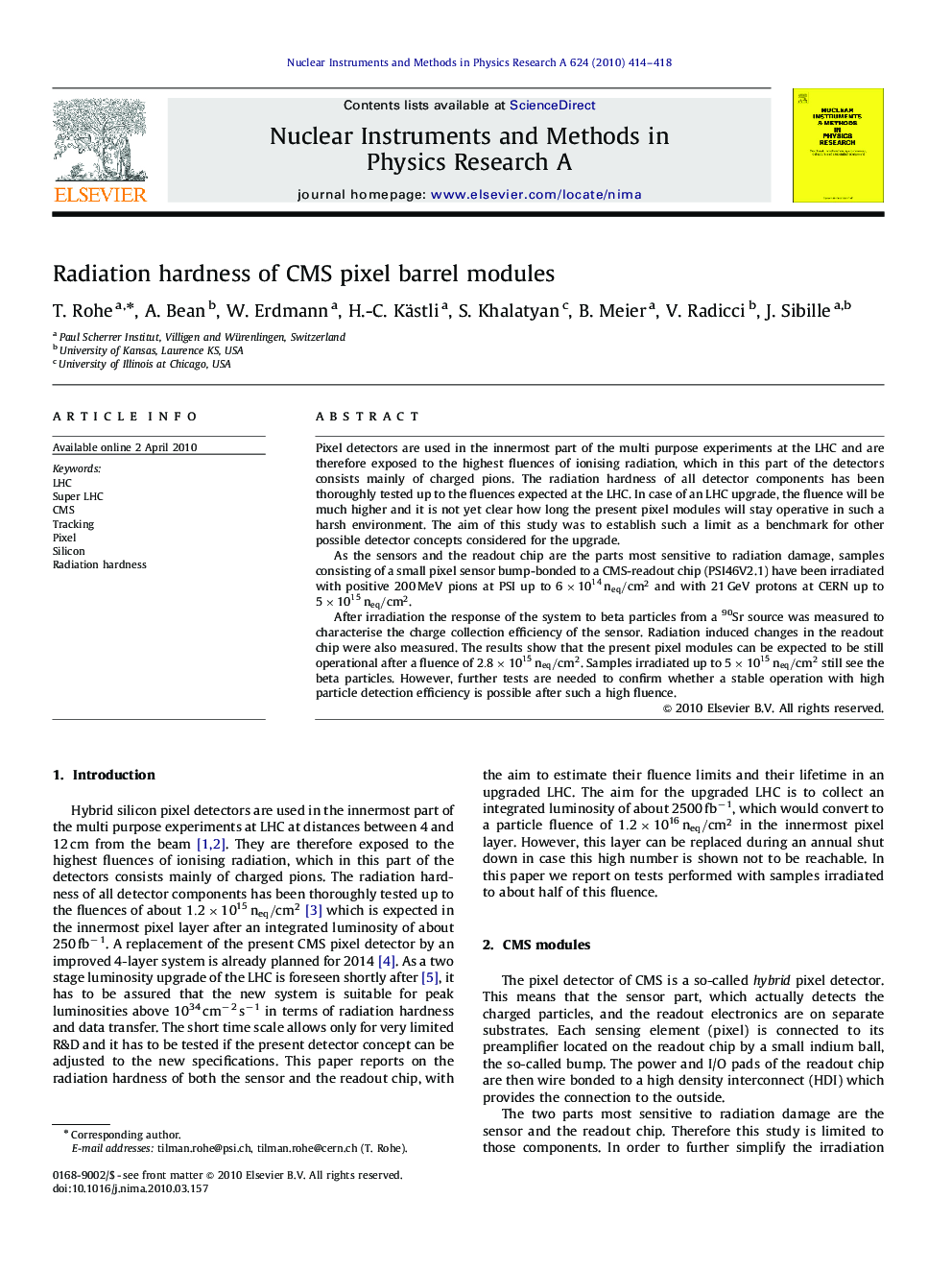| Article ID | Journal | Published Year | Pages | File Type |
|---|---|---|---|---|
| 1825633 | Nuclear Instruments and Methods in Physics Research Section A: Accelerators, Spectrometers, Detectors and Associated Equipment | 2010 | 5 Pages |
Pixel detectors are used in the innermost part of the multi purpose experiments at the LHC and are therefore exposed to the highest fluences of ionising radiation, which in this part of the detectors consists mainly of charged pions. The radiation hardness of all detector components has been thoroughly tested up to the fluences expected at the LHC. In case of an LHC upgrade, the fluence will be much higher and it is not yet clear how long the present pixel modules will stay operative in such a harsh environment. The aim of this study was to establish such a limit as a benchmark for other possible detector concepts considered for the upgrade.As the sensors and the readout chip are the parts most sensitive to radiation damage, samples consisting of a small pixel sensor bump-bonded to a CMS-readout chip (PSI46V2.1) have been irradiated with positive 200 MeV pions at PSI up to 6×1014neq/cm2 and with 21 GeV protons at CERN up to 5×1015neq/cm2.After irradiation the response of the system to beta particles from a 90Sr source was measured to characterise the charge collection efficiency of the sensor. Radiation induced changes in the readout chip were also measured. The results show that the present pixel modules can be expected to be still operational after a fluence of 2.8×1015neq/cm2. Samples irradiated up to 5×1015neq/cm2 still see the beta particles. However, further tests are needed to confirm whether a stable operation with high particle detection efficiency is possible after such a high fluence.
